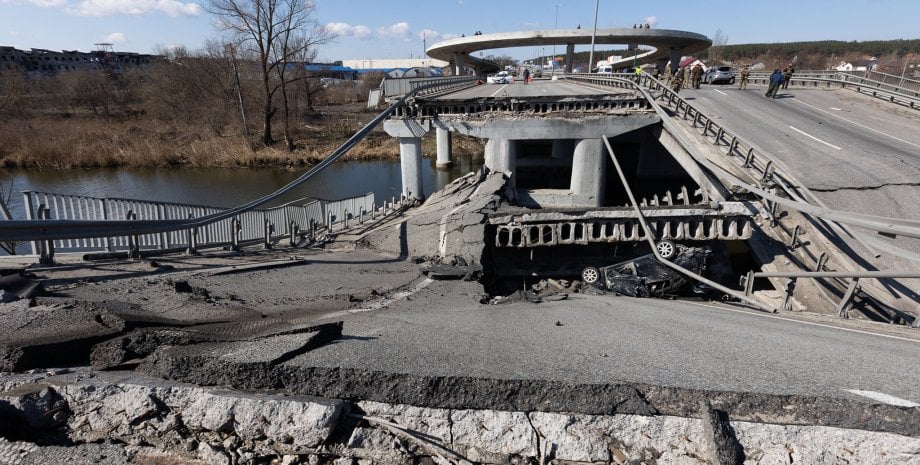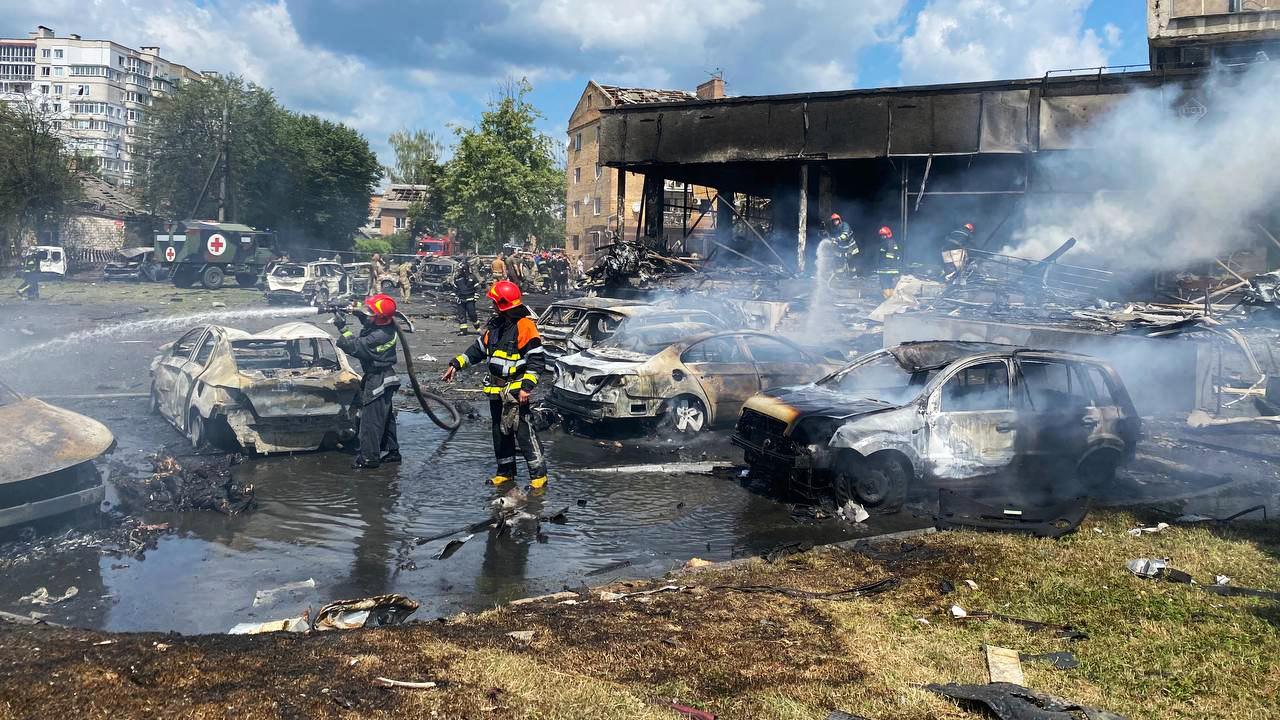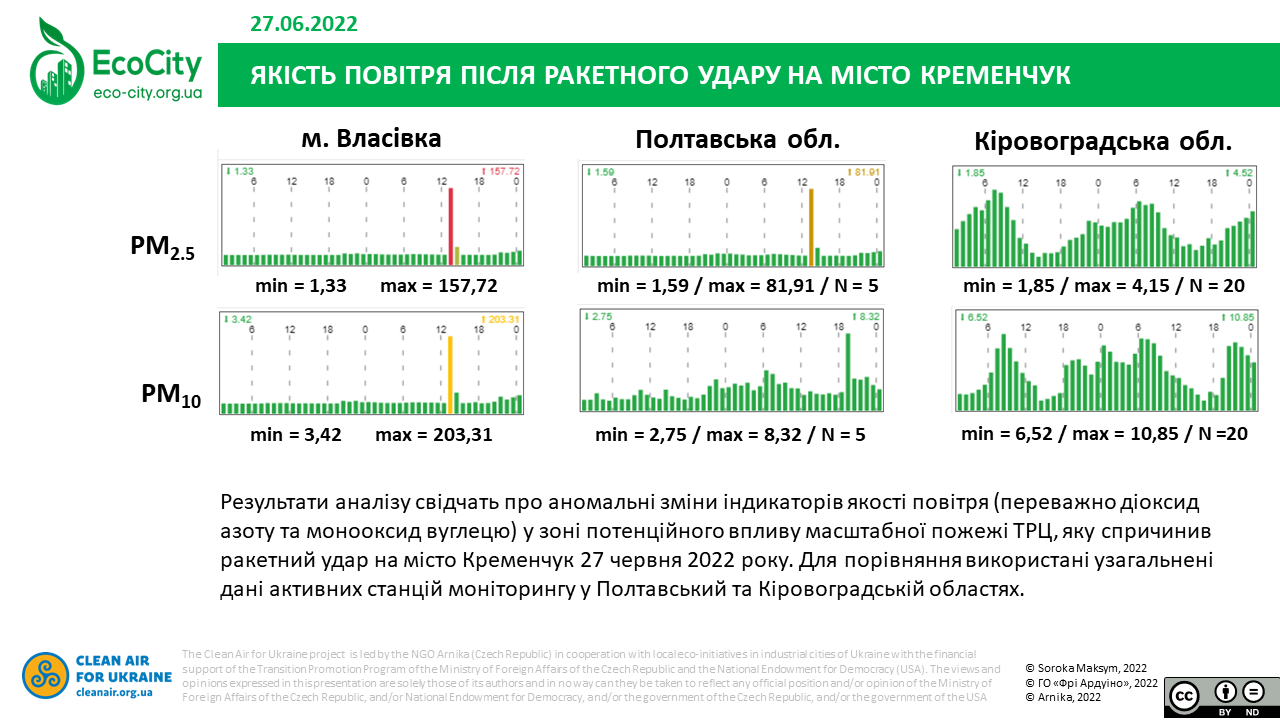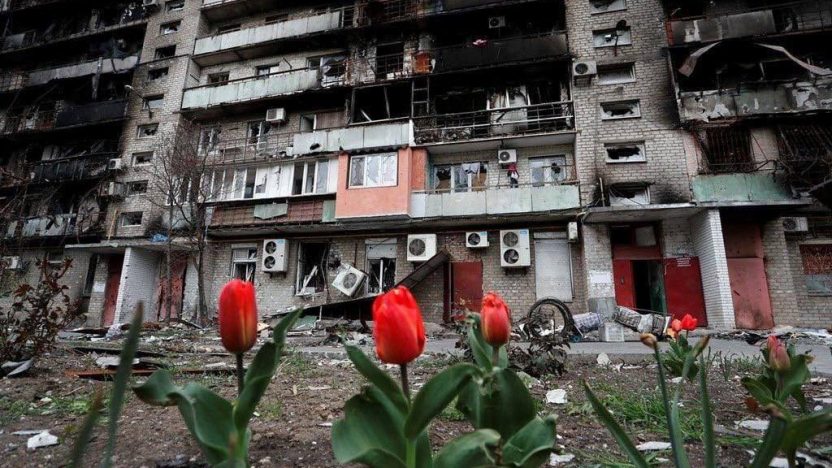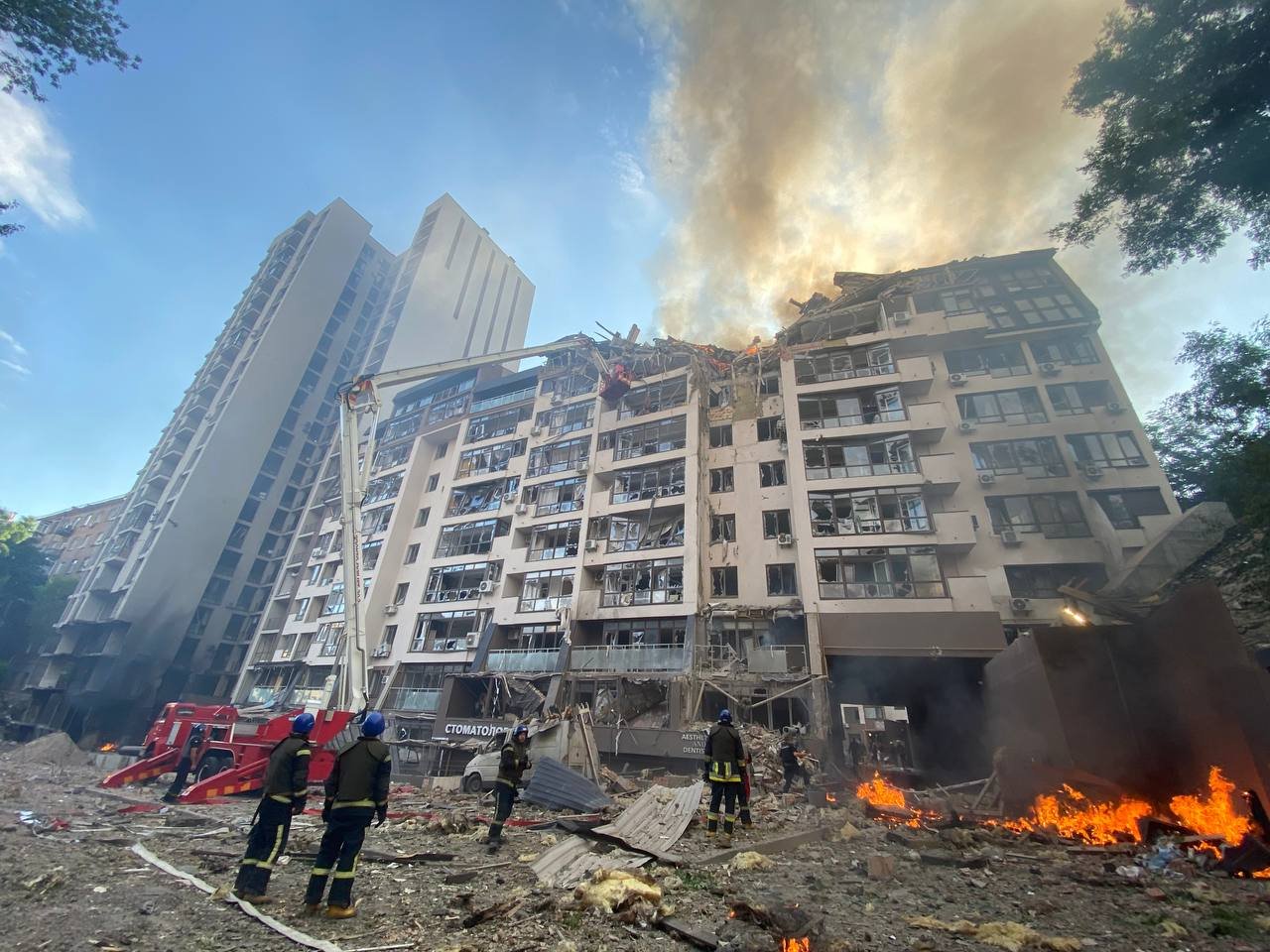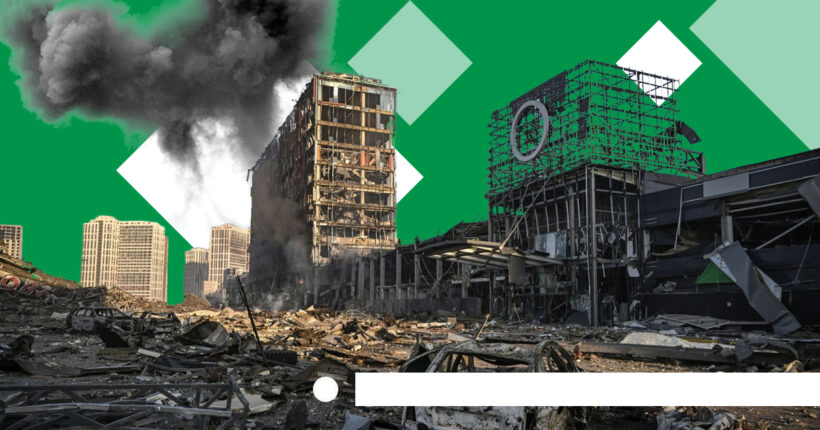
What is the problem?
Shelling by russian troops
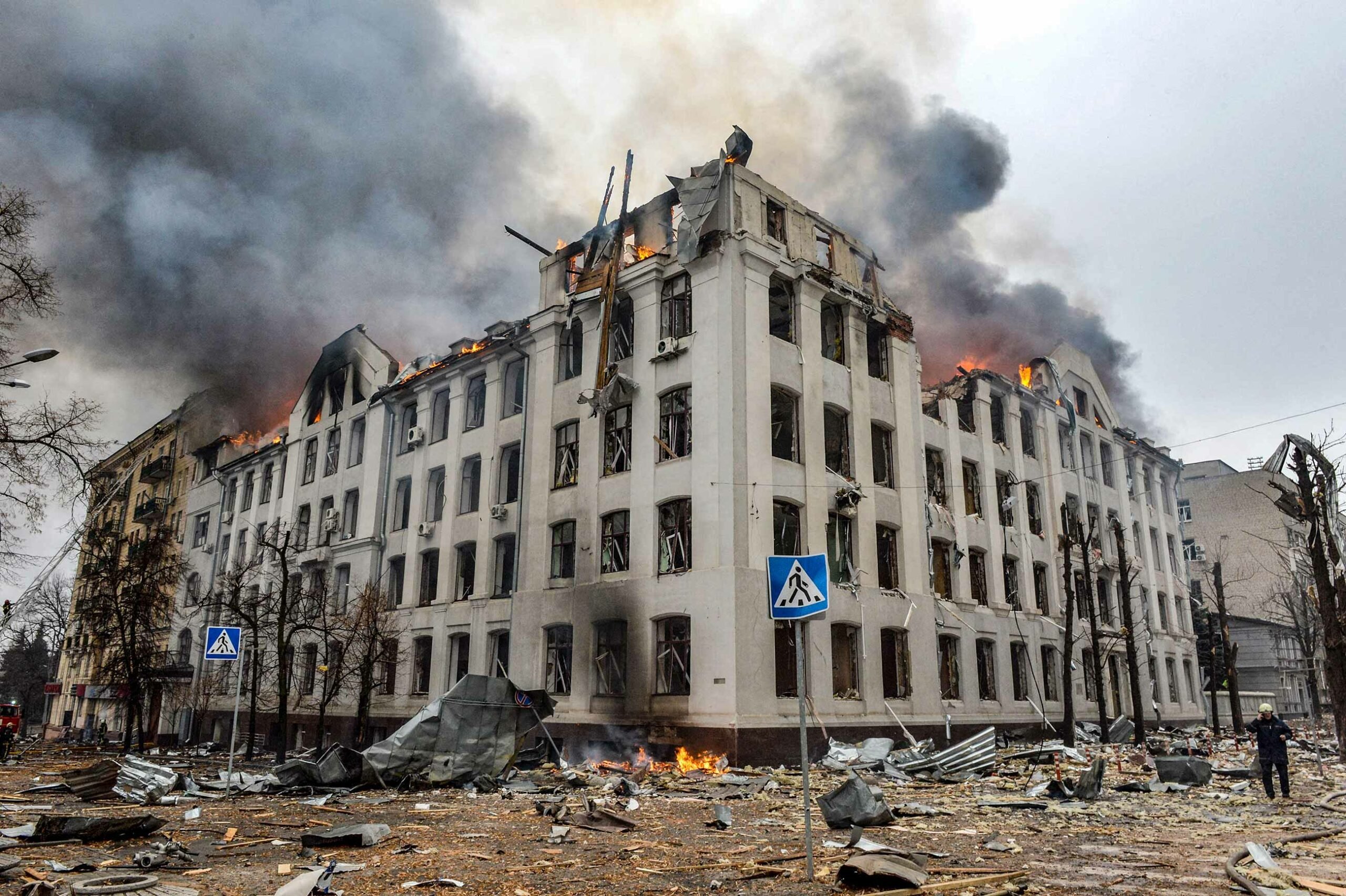
A fire in the building of the Faculty of Economics of Kharkiv National University named after Karazin as a result of russia's shelling
The russians continue actively and massively shelling Ukrainian cities: a missile hit a shopping center in Kremenchuk, resulting in the death of 18 people; in Dnipro, the main blast hit the building of the motor vehicle enterprise — at least two people died; in Kyiv, the occupiers once again targeted a residential building, Mykolaiv and Kharkiv under fire every day; Cherkasy, Rivne, Khmelnytskyi, Odesa, suffer daily, not to mention Donbas. Every russia's strike on populated areas of Ukraine leads to new victims.
The russians are massively destroying the cities' infrastructure. Ukrainian military experts cite various reasons for such actions: to prevent the transportation of military equipment or the desire to "respond" to the discussion of Western leaders about aid to Ukraine at the G7 summit. One way or another, the shelling of cities leads to terrible consequences, and in addition to human lives taken and destroyed buildings, we will have many more "fruits" brought to us by the russians. We will figure out together what it is about and what to do with it.
Destruction and overloading of infrastructure
When wars are waged in cities, it is not only residential buildings that are destroyed. Due to the impact of projectiles, the vital infrastructure ensuring the cities' functioning is damaged. It can lead to a lack of safe drinking water and electricity to power homes, businesses, and hospitals.
A report prepared by the Red Cross found that during protracted armed conflicts in cities, most problems arise from the dependence of large-scale interconnected infrastructures on the availability of skilled personnel to ensure service delivery:
"Heavy explosive weapons tend to cause significant damage to critical civilian infrastructure, causing a debilitating 'domino effect' on interconnected essential services such as health, water, and electricity systems," the report said.
Vlad Samoilenko, the urban projects initiator and the head of the NGO Urban crew, who is currently engaged in volunteering throughout the country, explains:
"During explosions, absolutely everything is destroyed. After hitting the building, the projectile scatters fragments, destroying everything around. Not only residential infrastructure objects suffer from the destruction of communications, but also strategic objects that provide vital activity. Accordingly, issues arise with water supply, electricity, sewage, and everything else," the expert explains.
Damage to the infrastructure can lead to the spread of infections and deterioration of the epidemiological situation in the city. Trenching and explosions destroy green spaces essential for cleaning the air in cities.
"We went to Soledar," Vlad continues (now the Urban crew organization is engaged in volunteering), "and saw that the communal services there do not work at all because they do not have electricity and water supply — volunteers do this. Two people are working in the city council because there is no executive branch anymore. They deliver water, hide people, and bring food. Accordingly, when there is no communication, nothing will work. Cooling systems do not work, and the water is not supplied — there are problems with everything. The city becomes uninhabitable, and everyone flees from it. When more than 50% of the critical infrastructure that provides water supply and sewerage is destroyed, it is impossible to stay in such cities," the expert states.
Air pollution after fires
The damage from a missile strike is not only the infrastructure destruction and human victims, who remain buried under rubble or severely injured. Toxic emissions in the air affect everyone who is near the place of impact and the resulting fire. Such damage can have a long-term effect and even lead to chemical poisoning.
During a large-scale fire in the Kremenchuk shopping mall, plastic burned, synthetic building materials melted, and, as a result, air quality in the city seriously deteriorated. It was the conclusion of the experts of the environmental community, "Clean Air of Ukraine."
They tried to analyze this situation in more detail. It is worth noting that no air quality monitoring station has been installed in Kremenchuk, so there is no direct online observation data. However, in a 15-km zone from the city, in the Vlasivka village, there is a modern AirFreshMax station from EcoCity. According to available data, on June 27, there was a strong and sharp air quality deterioration for at least 4 hours. An abnormal increase in combustion products — nitrogen dioxide, carbon monoxide, and partially ammonia — was observed.
The damage from missile attacks and the resulting fires is colossal and is caused by a combination of many factors:
👉🏻 Large fires are accompanied by fine dust emissions.
"When there were missile attacks in Kyiv, public monitoring stations clearly recorded a sharp spike in the amount of such dust in the air for an hour or two," says Maksym Soroka, environmental monitoring and measurement expert.
High concentrations of such dust cause diseases or lead to deaths. We should add that air pollution with fine suspended particles harms human health even at very low concentrations.
"A large number of rubbles, requiring a lot of energy resources to dismantle, humanitarian damage and emissions of chemicals into the air — I personally consider it to be insignificant compared to the damage resulting from fire," says the expert.
👉🏻 For example, when warehouses were burning near Kyiv, emissions into the air were similar to emissions from oil depots burning. There was a large number of organic substances and black carbon, as well as nitrogen dioxide.
"If we talk about the Kremenchuk shopping center," continues Maksym Soroka, "it is logical to assume that there was a large amount of plastic. It is black carbon, soot, on the surface of which persistent organic and polycyclic compounds are absorbed, almost all of which are carcinogenic. Many people suffered not so much from the missile damage itself, but from poisoning after combustion. It is not advertised, but we have insider information that many people were poisoned — there was no time to save them," the expert shares.
👉🏻 "insulated" buildings pose a special danger because dangerous polystyrene foam was used to insulate them. During its burning, a large number of polycyclic compounds and cyanide chloride, i.e. hydrocyanic acid, are released.
"Hydrocyanic acid can be compared with potassium cyanide in terms of toxic properties. People suffocate from the inside. This is a hellish death that all russians deserve," comments Maksym Soroka.
When a missile causes a large fire, even a person under the rubble, who was given a second chance for survival, loses it due to lack of oxygen and poisoning by combustion products.
👉🏻 It should be noted that the risk arises both during the fire itself, as a large amount of combustion products are released into the air, and after it. Maksym Soroka said that while observing the air quality monitoring stations, the specialists noticed that after the fire was extinguished and the incinerator dried out, it turned into a secondary source of ash emissions, including toxic ones. Any wind will lift it up again and blow it into the air.
What is the solution?
Environmental sustainability of cities
Cities that the enemy is destroying today, Ukraine will rebuild. Some specialists emphasize the importance of the ecological sustainability of cities. This aspect should be taken into account in future reconstruction. It is stated in a scientific article of the University of Turku in Finland. There, the resistance of cities to military operations was considered using the example of the Second World War because it was the first war in which military strategies systematically aimed to devastate cities and mass murder civilians.
The consequences of urban warfare, in addition to the destruction of infrastructure, included hunger, malnutrition, poverty, infectious diseases, poor hygiene, pests, and overexploitation of local natural resources. In some cities, hunting and gathering became important. People scavenged garbage dumps or bombed-out sites to find something edible or other useful materials. Sometimes residents had to move to the countryside to find or grow food. In practice, the wartime urbanization of the countryside and the ruralization of the cities allowed nature to gradually take over the cities. After all, the devolution of cities meant a return to the origins of urbanization — to nature.
Crisis spurs development, so the destruction of cities in some cases after World War II led to environmental progress.
- Due to the lack of energy resources, the cities of that time resorted to more economical use, in particular, the intensity of heating the premises decreased.
- Daylight saving time was again introduced to save energy. A more natural diurnal cycle in darkened cities likely benefited both city dwellers and nature.
- Preservation, reuse, and processing of various raw materials have become widespread.
- Reduced car use and increased use of public transport combined with cycling and walking have made many cities more active, healthier, cleaner, and quieter.
- The increased use of local natural resources, including urban soil, urban fauna and flora, rainwater, groundwater, and surface water, has forced people to change their attitudes toward natural habitats within cities. The revival of wartime cities turned them into a kind of "urban livestock farms". The number of members of the nature protection movement has increased. These events give reason to call many wartime cities eco-cities.
"Warehouses and factories built in green areas towering over endless rows of hideous buildings, the absence of public spaces and playgrounds, churches hidden behind railway arches — such streets should have no place in post-war Britain", these were the first words of the propaganda film under called "Model City", released at the end of the Second World War in Britain. The message of the film was clear: the new typical city should be comfortable and safe for all residents.
Vlad Samoilenko believes that to create an ecologically sustainable city, as well as to make it safe for residents, it is necessary to build houses, roads, and any infrastructure from those materials that emit less toxic substances.
"A balcony sheathed with plastic lining or a facade made of plastic elements, even without heat, emits dangerous elements when heated. Therefore, it is better to give preference to natural materials, as well as bricks and concrete. That is, to use fewer chemical compounds that emit toxic substances due to changes in temperature regimes. Secondly, the more green areas, whether without war or in war conditions, the better, because a bush or a tree can save a person from shrapnel, you can hide behind it," the expert says.
Also, according to Vlad, another important point that must be taken into account in the future is the arrangement of normal bomb shelters and their maintenance in proper condition.
"Now there are a lot of residential buildings that are being built even without parking lots. Therefore, it is necessary to comply with state norms and standards," he says.
However, such actions to rebuild ecologically sustainable cities require time, resources, and the safety of city residents only in the future. To protect yourself now, you need to act quickly. How exactly, we will tell in the next section.
How to protect yourself after a missile strike and fire?
Actions for three days
The following two days after each fire, the air will be very polluted, then the concentration of harmful substances will decrease for 3-4 days. At this time, to protect yourself from the toxic effects of combustion products on the body, you must follow the following recommendations:
- During the first minutes after a fire has started, close the windows. If you have a humidifier at home, now is the time to turn it on: water particles in the air will "catch" pollutants and dust and settle on the floor. Then carry out wet cleaning. It is better to avoid walking in the fresh air.
- In no case should you approach the place of the fire — it is better to avoid these places. The products of combustion, even after the fire is extinguished, continue to be blown by the wind and spread in the surface atmosphere layer — the layer where we breathe.
- Take care of the cleanliness of your home, office, or the space you are in. Black carbon, which is a product of combustion, is highly toxic and can settle as ordinary dust on all surfaces. Wet cleaning is necessary to avoid its harmful effects.
- Drink more water.
- If you feel unwell, do not be afraid to contact your family doctor.
How to find out about the state of the air?
Air pollution in cities and villages is measured by air quality monitoring posts. The degree of air pollution in the city is determined by the Regional Center for Hydrometeorology, whose employees take samples, determine the acidity of atmospheric precipitation, etc. Information about the state of the air in this or that city can be found on the websites of the ecology departments of regional state administrations.
In addition to state air monitoring posts, you can monitor the state of pollution by installing public monitoring posts that transmit information around the clock in real-time. The most famous are EcoCity, LUN, and SaveEcoBot (you can check the presence of public monitoring posts in your locality by checking out the maps on the sites linked above).
Newsletter
Digest of the most interesting news: just about the main thing




